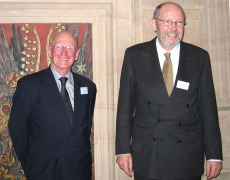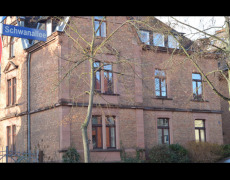History
The CMS was founded in 1958 by Friedrich Matz who was a professor of classical archaeology at the University of Marburg. Matz considered seal iconography crucial for understanding the Aegean world and saw the existence of a collective work documenting Aegean seals in a standardized way as necessary. With headquarters at Marburg, the project was active from 1958-2011 under the direction of the Akademie der Wissenschaften und der Literatur in Mainz.
According to Matz’s publication plan, the seals would be ordered in volumes according to where they are kept. For the publication of the first volumes, Matz’s former student Hagen Biesantz, who had published a thesis on Mycenaean seals, coordinated work in Greece. Carl Albiker was chosen as project photographer and Piet de Jong and Antonis Papailiopoulos as draughtsmen. Biesantz remained Matz’s co-editor until 1967.
In 1965, another former student of Matz, Ingo Pini, who had recently completed a doctoral thesis on Minoan burial customs, joined the project. Pini started as an editorial assistant but in 1969 he became co-editor and in 1975 editor of the series. From the start, Pini felt the need for primary research, comprehensive publication, and a systematic approach to the material. For this reason, he started creating an archive of impressions/casts for all the seals that were already or were going to be published in the series. After some time, he developed his own methods for photographing seals himself and trained a draughtswoman in drawing seals. Later, he expanded Matz's publication plan by including a series of volumes containing new finds (CMS V Suppl. 1-3).
In 1971, a grant from the Volkswagen Stiftung allowed for the employment of a second archaeologist. In the years that followed, this post, which was later continued by funds of the Academy in Mainz, was held by several scholars. In 1985, Walter Müller, who was at the time completing a thesis on LM pottery, joined the Marburg project. Müller stayed on until the end in 2011. In 2003 and after Pini’s retirement, he became co-editor of the CMS.
While working at the CMS, Pini became engaged in an intensive study of the material he was publishing. With time, he became very proficient in stylistic and iconographical aspects of the material and was considered an expert in the field of Aegean glyptic. Müller, on the other hand, devoted his efforts to the study of sealings as objects which were, up to the point where he joined the project, not consistently documented as such. Moreover, he became an expert in the materials used in Aegean glyptic which were at that time often falsely and inconsistently identified. Having previous experience in engineering, Müller also introduced the use of technical methods for the study of Aegean glyptic, such as X-ray photographing of metal signet rings. In their 26 years of work together, the pair travelled for months each year to museums all over Greece collecting material to be published in the CMS volumes.
In 1986, and with the help of the archaeologist and programmer Stefan Wildt, Pini and Müller started work on SPHRAGIS, a database meant to include all seals published in the CMS volumes. This project was suspended after the sudden death of Stefan Wildt and was only resumed by Walter Müller in 2005. The new database was a pared-down version of the initial SPHRAGIS but unlike the initial project also contained the images of the seals. These were available after an earlier grant by the Institute for Aegean Prehistory in Philadelphia had allowed for all the images kept at the archive to be recorded in digital form. Moreover, Müller also created a database for the sealings. In 2007 the CMS Databases were intergrated in ARACHNE, the Central Object-Database of the German Archaeological Institute and the Archaeological Institute of the University of Cologne. By the end of the project in 2011, revised data on all seals published in the CMS volumes had been imported in the seal database.
Starting in the 1970s and with the last symposium taking place in 2008 on the occasion of the 50th anniversary of the CMS, six international symposia on the topic of Aegean glyptic have been organized by the CMS. Furthermore, four doctoral theses were completed at the study centre in Marburg.
In December 2011 the CMS Project at Marburg came to an end. The archive of the CMS was moved at the Institute for Classical Archaeology and Byzantine Archaeology of the University of Heidelberg.
Today the CMS Series comprises 25 catalogue and 10 supplementary volumes mostly published between 1966 and 2011. One supplementary volume was published from the CMS Heidelberg in 2018.




